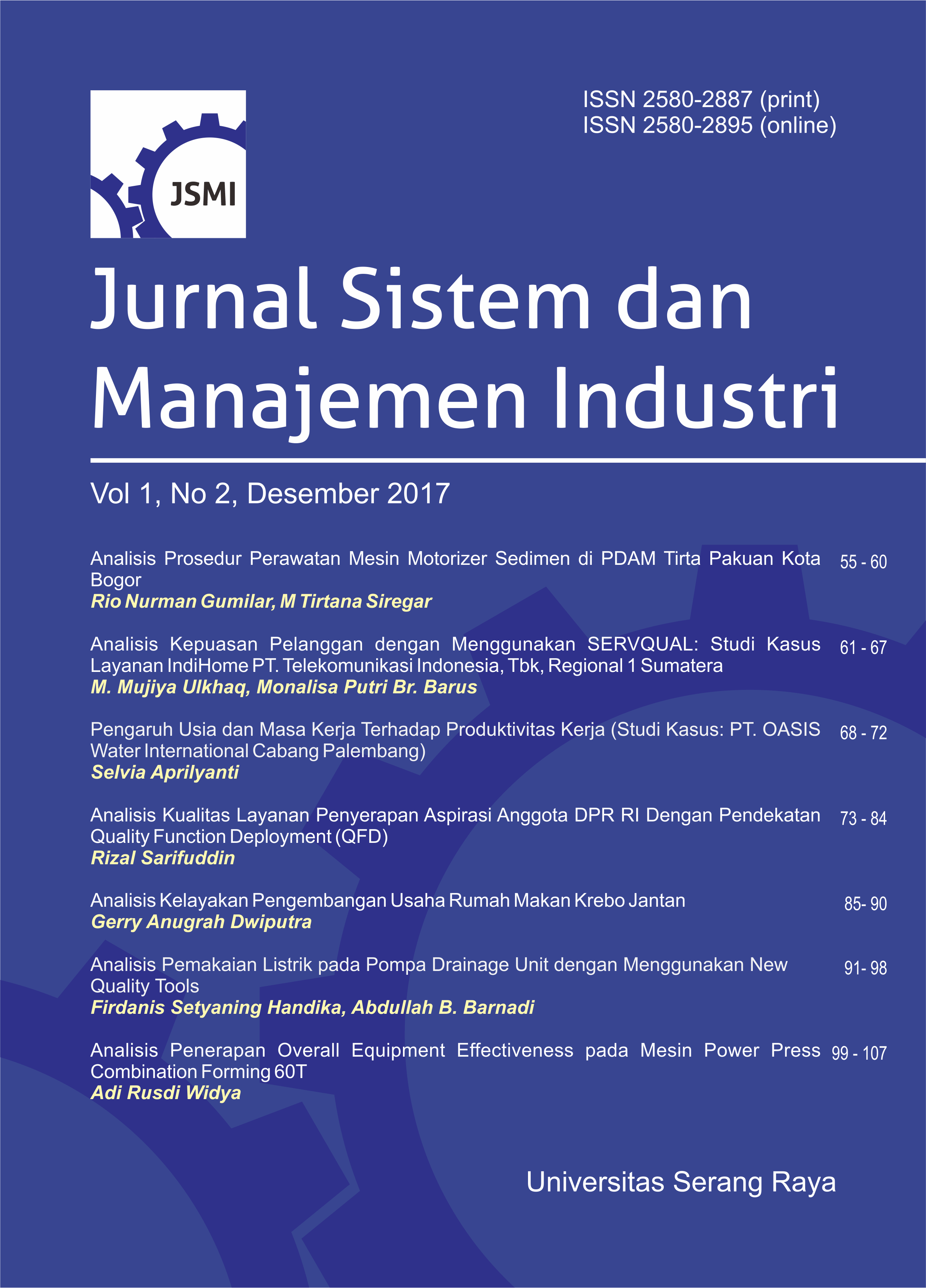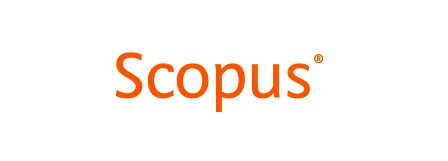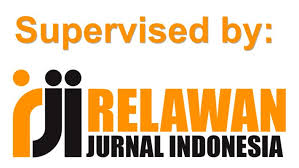Analisis Penerapan Overall Equipment Effectiveness Pada Mesin Power Press Combination Forming 60T
DOI:
https://doi.org/10.30656/jsmi.v1i2.414Keywords:
Autonomous Maintenance, FMEA, FTA, MTBF, OEE, RCMAbstract
Corrective action on the engine damage is a temporary emergency measure, so further action is required by conducting maintenance activities, prevention of damage (Preventive maintenance), and able to detect abnormal symptoms before the machine breakdown occurs. The sudden impact of machine damage resulted in disruption of planned production performance so that it is necessary to identify and analyze the factors that cause the machine damage. Establish maintenance method using Autonomous Maintenance, Preventive Maintenance and Reliability Centered Maintenance (RCM) concept to prevent machine failure from the beginning, through fault tree analysis (FTA) method, failure mode effect, and analysis (FMEA), mean time between failure (MTBF) is an analytical activity for implementing RCM systems on machines and critical components, able to identify and detect symptoms of malfunction before the machine is damaged. The results of the research get better application of maintenance system so that identification of important components can be anticipated from the symptoms of damage. Overall, there is an increase in performance seen from the increase of Overall Equipment Effectiveness (OEE) value, still expected to continue to increase according to JIPM 85% standard value. In conclusion FMEA, FTA, MTBF analysis method can be used to build autonomous maintenance, preventive maintenance and reliability centered maintenance so as to facilitate the production and maintenance in determining the proper maintenance of the machine.
Downloads
References
Asgara, B. Y., & Hartono, G. (2014). Analisis Efektifitas Mesin Crane Dengan Metode Overall Equipment Effectiveness (OEE) di PT. BTU, Divisi Boarding Bridge. Industrial and Systems Engineering Assessment Journal (INASEA), 15(1), 62–70.
Cahyani, L. D., Tama, I. P., & Hardiningtyas, D. (2014). Peningkatan Efektivitas Pada Mesin Welding Dengan Penerapan Total Productive Maintenance (Studi kasus: PT Arthawenasakti Gemilang, Malang). Jurnal Rekayasa Dan Manajemen Sistem Industri, 2(3), 563-576.
Gupta, A. K., & Garg, R. K. (2012). OEE improvement by TPM implementation: a case study. International Journal of IT, Engineering and Applied Sciences Research, 1(1), 115–124.
Hanifa, A., Puspitasari, N. B., & Rumita, R. (2014). Analisis Penerapan Kebijakan Total Productive Maintenance Pada Proses Produksi Transformer (Studi Kasus: PT. Nikkatsu Electric Works). Industrial Engineering Online Journal, 3(2), 1–10.
Heizer, J., & Render, B. (2010). Manajemen Operasi. Jakarta: Salemba Empat.
Palit, H. C., & Sutanto, W. (2012). Perancangan RCM untuk Mengurangi Downtime Mesin pada Perusahaan Manufaktur Aluminium. In Prosiding Seminar Nasional Manajemen Teknologi XV (p. A-38-1-A-38-7). Surabaya: Program Studi MMT-ITS.
Paropate, R. V, & Sambhe, R. (2013). The Implementation and Evaluation of Total Productive Maintenance–A Case Study of midsized Indian Enterprise. International Journal of Application or Innovation in Engineering & Management (IJAIEM), 2(10), 120–125.
Sari, D. P., Rosyada, Z. F., & Rahmadhani, N. (2011). Analisa Penyebab Kegagalan Produk Woven Bag Dengan Menggunakan Metode Failure Mode and Effects Analysis (Studi Kasus di PT Indomaju Textindo Kudus). Prosiding SNST Fakultas Teknik, 1(1), C6–C11.
Sayuti, M., & Muhammad, S. R. (2013). Evaluasi Manajemen Perawatan Mesin Dengan Menggunakan Metode Reliability Centered Maintenance Pada PT. Z. Malikussaleh Industrial Engineering Journal, 2(1), 9–13.
Singh, R., Gohil, A. M., Shah, D. B., & Desai, S. (2013). Total productive maintenance (TPM) implementation in a machine shop: A case study. Procedia Engineering, 51, 592–599.
Wakjira, M. W., & Singh, A. P. (2012). Total productive maintenance: A case study in manufacturing industry. Global Journal of Research In Engineering, 12(1), 25–32.
Downloads
Published
Issue
Section
License
All articles in Jurnal Sistem dan Manajemen Industri can be disseminated provided they include the identity of the article and the source of the article Jurnal Sistem dan Manajemen Industri. The publisher is not responsible for the contents of the article. The content of the article is the sole responsibility of the author
Jurnal Sistem dan Manajemen Industri is licensed under a Creative Commons Attribution-NonCommercial-ShareAlike 4.0 International License.
















1.png)
.png)
.png)
.png)


